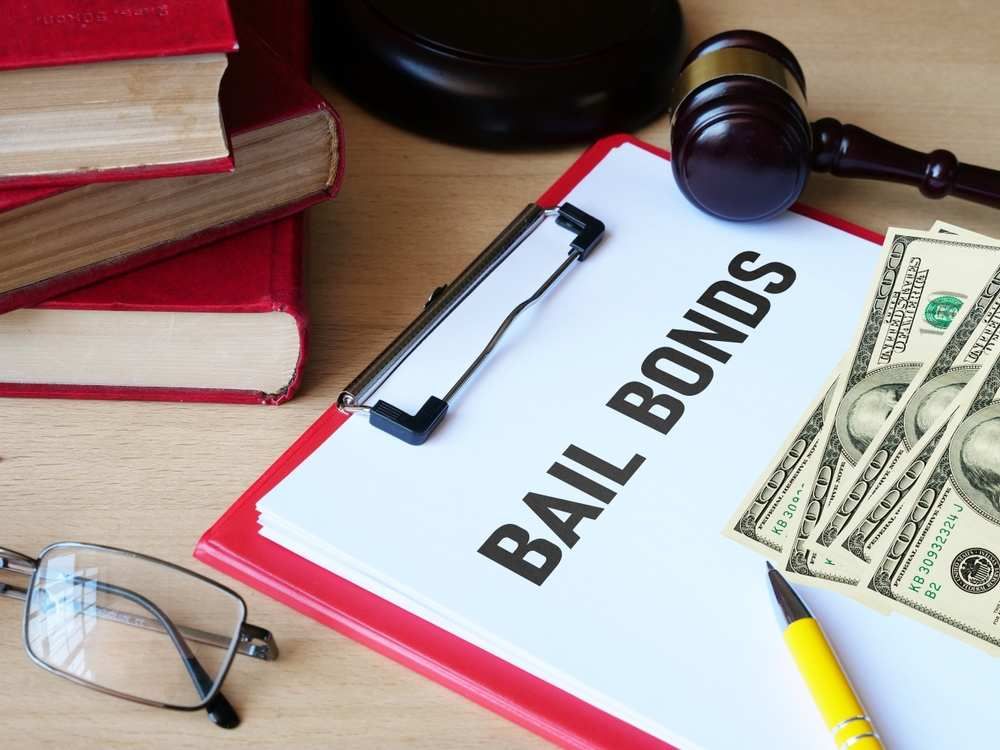Exactly How Bail Bonds Work: A Comprehensive Overview
Bail bonds play an essential function in the lawful process by offering a system for people to protect their launch from safekeeping while awaiting test. Understanding the complexities of just how bail bonds work, including the roles of courts, bail bondsmensman, and the different costs included, can be necessary for any individual browsing this complex system. As we check out the various types of bail bonds and the aspects that influence their costs, it ends up being evident that the duties tied to these arrangements prolong much past simple monetary transactions. What effects do these duties hold for defendants and their households?
What Are Bail Bonds?
Bail bonds are often utilized in the criminal justice system as a financial warranty that an accused individual will show up in court as called for. When an individual is detained, a judge might set a bail quantity based upon various variables, consisting of the extent of the violation, the offender's criminal history, and the threat of trip. If the implicated can not manage the bail amount, they might seek the aid of a bondsman.
A bail bond is a contract between the accused, the bondsman, and the court, ensuring that the offender will certainly meet their legal responsibilities. In exchange for a cost, typically a percentage of the overall bail quantity, the bondsman provides the court with a surety that assures the bail. If the accused falls short to appear in court, the bondsman is accountable for paying the complete bail total up to the court, which may lead them to go after the offender for healing.
Bail bonds offer to help with the release of people awaiting trial, permitting them to maintain their work and family responsibilities while making sure conformity with court looks. This system is important to stabilizing the rights of the implicated with the interests of public security and judicial stability.
The Bail Process Explained
After understanding the role of bail bonds in the criminal justice system, it is very important to describe the bail process itself. The bail procedure starts when a person is detained and nabbed. Complying with the apprehension, the accused is commonly brought prior to a court for a first hearing, where the judge will certainly establish whether to approve bail and established the amount.
If bail is given, the offender has several choices to safeguard their release. They may pay the complete bail amount in money, which is returned upon the conclusion of their court responsibilities. Conversely, the accused can look for the support of a bondsman, who charges a non-refundable charge-- generally a percent of the total bail quantity-- to publish bail on their behalf.
As soon as bail is posted, the accused is launched from custodianship with the understanding that they must go to all set up court looks. Falling short to appear can lead to the forfeit of the bail and added lawful consequences. The process wraps up when the situation is solved, at which direct the bail is either returned or retained by the bail bondsman as settlement for their solutions.

Sorts Of Bail Bonds
Countless options exist when it concerns protecting a release from protection with bail bonds. Recognizing the various kinds can aid defendants and their families make informed options.
One of the most common kind is the guaranty bond, which includes a third-party bail bondsmansman who assures the complete bail total up to the court for a non-refundable cost, typically around 10% of the bail quantity. This choice is widely made use of as a result of its accessibility for people that might not have the financial means to pay the complete bail upfront.
Another kind is the money bond, where a co-signer or the accused pays the complete bail amount in cash money straight to the court. Upon successful conclusion of the instance, the funds are reimbursed, minus any type top article of appropriate charges.

Last but not least, immigration bonds are particularly developed for people detained by immigration authorities, promoting their launch while they wait for legal proceedings. Each sort of bail bond serves unique functions, accommodating numerous scenarios and needs within the lawful system.
Factors Influencing Bail Costs
A number of essential factors influence the total price of bail, identifying just how much an accused or their family members might require to spend for launch. Among the main aspects is the extent of the charges. Felony charges commonly lead to higher bail quantities contrasted to misdemeanors because of the perceived threat of trip and the prospective repercussions of the infraction.

Courts might take into consideration a defendant's revenue and properties when determining bail, possibly leading to higher expenses for those with higher financial sources. If a bond bondsman regards a greater risk, they may establish a higher costs, further enhancing the costs associated with safeguarding a bail bond.
Obligations of the Indemnitor
When bail has been safeguarded, the duties of the indemnitor, or the individual that concurs to back the bail bond, entered play. link The indemnitor is primarily liable for ensuring that the offender goes to all arranged court looks. Failure to do so may lead to the forfeiture of the bail bond and potential lawful consequences for the indemnitor.
Furthermore, the indemnitor is bound to pay off the bail bond company the total of the bond if the accused fails to appear in court. This consists of any kind of fees or costs incurred by the bail representative in recouping the defendant, which might further rise the financial problem on the indemnitor.
The indemnitor has to likewise preserve open interaction with both the bail and the defendant bail bondsman, giving any kind of necessary updates associated with the defendant's situation. It is essential for the indemnitor to continue to be conscious of the lawful obligations and consequences connected with the bail bond, as ignorance may lead to unintentional liabilities.
Final Thought
In summary, bail bonds act as a critical mechanism within the criminal justice system, helping with the release of accuseds while ensuring their appearance in court. Recognizing the various kinds of bail bonds, the details of the bail process, and the variables influencing bail expenses is necessary for browsing this facility landscape. In addition, understanding of the obligations borne by the indemnitor highlights the significance of notified decision-making when engaging with bail bond solutions.
Recognizing the intricacies of how bail bonds operate, including the functions of courts, bail bondsmen, and the numerous fees involved, can be vital for anybody navigating this complicated system.After recognizing the role of bail bonds in the criminal justice system, it is important to detail the bail process itself. The offender can seek the assistance of a bail bondsman, that bills a non-refundable cost-- typically a percentage of the complete bail amount-- to post bail on their part.
If a bail bondsman perceives a you could try these out greater threat, they may set a higher costs, further increasing the costs linked with securing a bail bond. Comprehending the different types of bail bonds, the complexities of the bail process, and the variables influencing bail costs is important for browsing this complicated landscape.
Comments on “The Secret to Effective Bail Bonds: Trust and Openness”